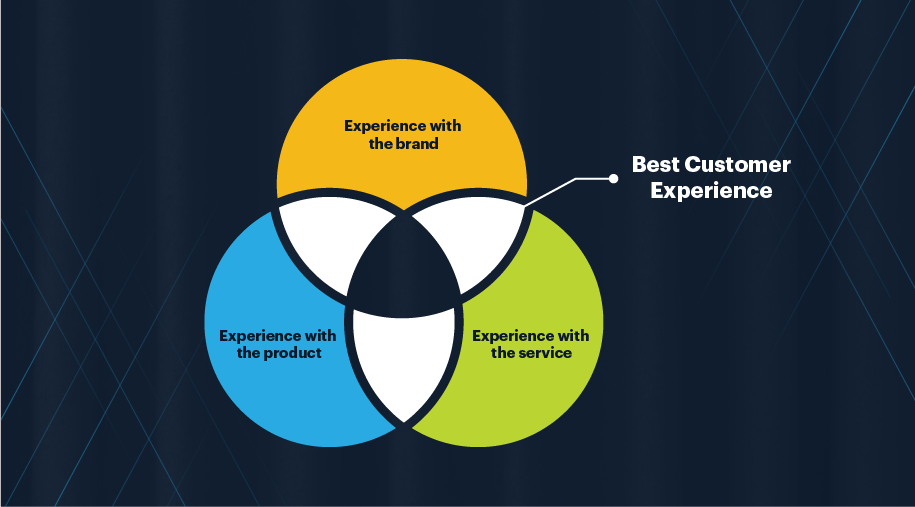Customer Experience Management (CEM) Facts and Figures
What is CEM?
Customer experience management (CEM) refers to processes used to manage every interaction between a customer and a firm. Experience management begins before a product or service is purchased and continues after the sale is finished. CEM aims to increase customer retention and loyalty.
Customer experience management is about more than just serving your online customers. Knowing where people buy and which dog food brand they prefer isn't enough. It is all about getting to know your consumers so well that you can build and provide tailored experiences that encourage them to stay loyal to you and tell their friends about you, which is the most profitable kind of advertising. Below are the detailed statistics indicating the facts and figures regarding the CEM.
Why is the client experience so important?
Customer experience is important because every customer values it. Similarly, studies have shown that clients are happy to pay extra for a positive customer experience. On the other hand, statistics demonstrate that negative experiences result in a negative reputation and income loss. Some of the noticeable statistics are shown below regarding the importance of the client's experience.
- 32 percent of customers are willing to abandon a brand they adore because of a single unpleasant experience,
- A favorable encounter with a brand is more influential than advertising for 65 percent of customers in the United States.
- After a terrible experience, 88 percent of online users are less likely to return to a site.
- Customers believe that the dealing experience with a company is just as essential as the products and services they offer.
- Customers who have had the finest previous experiences spend 140 percent more than those who have had the worst.
- Efforts to improve the customer experience can reduce customer service charges by up to 33 percent.
- Net promoter score disparities account for 10-70 percent of sales growth variances between direct competitors.
- When a company provides tailored experiences, 80 percent of customers are more inclined to purchase.
- Customers share favorable experiences with an average of 9 people but negative ones with an average of 16 individuals.
- Consumer experience is seen as a competitive factor by 81 percent of businesses.
- According to 90 percent of CEOs, customers have the greatest influence on company strategies.
Current Value of Customer Experience Management
The consumer experience is becoming increasingly crucial as time passes. Customers want seamless experiences facilitated by technology in our new digital world.
- According to 67 percent of customers, their expectations for good service are stronger than ever.
- 81 percent of companies compete primarily based on customer service.
- 67 percent of business leaders fear their company will no longer be competitive without digital transformation.
How do Businesses fall?
Customer experience is critical for organizations, according to the statistics. Unfortunately, many companies appear to be falling short of client expectations.
- According to 51 percent of customers, most businesses fall short of their expectations for a positive customer experience.
- Consumers are dissatisfied with brands in 82 percent of cases.
- Many businesses neglect the importance of digital transformation, and thus their operations are not ready.
- According to 72 percent of corporate strategists, their digital efforts fall short of revenue targets.
- 70 percent of employees lack mastery of the abilities required to perform their jobs.

Customer Experience's Business Impact
Customer experience and profitability statistics show that providing a positive customer experience increases your chances of attracting new customers and closing more sales. The following are some ways that customer experience can affect a company.
- Businesses that value customer experience sees a 4-8 percent revenue increase over their competitors.
- 89 percent of customers shifted to a competitor after following a bad customer encounter with a brand,
- Customer-focused businesses grow revenue 1.4 times faster than non-customer-focused businesses.
- Firms will have spent $641 billion on customer experience technologies by 2022,
- 4 percent of customers will most likely switch brands if customers’ preferred brand's purchasing process is bad.
Customer Experience Personalization
People are clamoring for a more personalized experience now more than ever.
- Only 34 percent of businesses consider their clients as individuals rather than groups.
- 74 percent of customers are exasperated when website content and user experience are not tailored.
- Consumers say they are only willing to communicate through customized messaging in 72 percent of cases.
- Only 13 percent of consumers said a corporation has ever proactively sought out them. 85 percent of the individually contacted clients believed the experience was worthwhile.
- 54 percent of consumers say they have observed more "humanity" in the communications they've received from businesses since the pandemic began.
Retention and Churn
- The fight against churn has become critical for businesses dealing with dwindling brand loyalty,
- Nearly two-thirds of consumers (58%) will end a relationship with a company due to bad customer service,
- 70% of customers said they leave a website if they cannot locate what they are looking for in just a few clicks.
- Consumers admit that 43 percent have quit doing business with a company that failed to personalize their experience.
- If a corporation makes a mistake, 78 percent of customers will forgive it if they believe they received good service.
- 81 percent of irate customers say that if they were given a high-value voucher or gift card, they would consider continuing with the company in the future.
Consumers Expect Quick Responses.
- 75% of consumers expect immediate information when they use their smartphones.
- 53% of individuals in the United States will abandon their online cart if they can't find a quick response to their question.
- Customers anticipate an "instant" answer to their support questions from 90% of companies (10 minutes or less).
Customers are More Mobile and Independent than Ever Before
- Customers expect immediate access to the information they require, no matter where they are, and many would prefer to be given the tools to obtain this information on their own.
Do Not Overlook the Convenience of Purchasing on Your Phone
- Mobile commerce was predicted to account for 45 percent of the overall US e-commerce market by the end of 2020, up from 25 percent in 2019.
- 76 percent of shoppers prefer to purchase on their smartphones because it saves them time. Only 12 percent of shoppers believe it offers them the most convenient shopping experience.
- Customers prefer to assist themselves whenever possible.
- Today, more than 6 out of 10 customers prefer to use digital self-service channels to get answers to their questions (website, mobile app, online chat, and voice response system).
Statistics on Poor Customer Service
- According to 57 percent of customers, they are less likely to recommend a company if its website is poorly designed and not mobile-friendly,
- Half of the customers will cast aside a website if it is not mobile-friendly,
- 92 percent of customers would forget about it after two or three poor customer experiences with the same brand.
- Only 19.3 percent of customers who have had a negative encounter with a company will report it directly to the company.
AI and Automation
Artificial intelligence and chatbots continue to divide people.
- According to 81 percent of business leaders, intelligent automation improved the customer experience by allowing for faster responses.
- 35 percent of retailers intended to increase their investment in artificial intelligence and chatbots for their e-commerce operations in 2021.
- According to 86% of respondents, they still prefer human operators to chatbots. On the other hand, 71 percent indicated they would be less likely to utilize a product or service if they did not offer live customer support personnel.
- Only 22 percent of consumers had a favorable opinion of chatbots. According to 60 percent of respondents, chatbots do not adequately explain their difficulties.
- Consumers will utilize AI and chatbots for customer service in 67 percent of cases in 2020, up from 46 percent in 2019.
The Secret to Outstanding CEM is Consistency
- According to 63 percent of customers, the greatest brands consistently surpass their expectations throughout the customer journey.
- 65 percent of respondents will become long-term consumers if a brand can give great experiences throughout the client journey.
- A flawless experience across all devices and channels is a "high expectation" for 42 percent of consumers. When it comes to providing quality experiences, 11 percent of decision-makers believe that seamless, omnichannel experiences are the most crucial element.
Loyalty is also a Success Key
- 42% of consumers said they have become less loyal to the companies they usually purchase with since the epidemic's beginning,
- Customers agree that organizations that demonstrate empathy during a customer service interaction will earn their loyalty.
- Customer service is extremely important to 90 percent of respondents regarding brand choice and loyalty.


